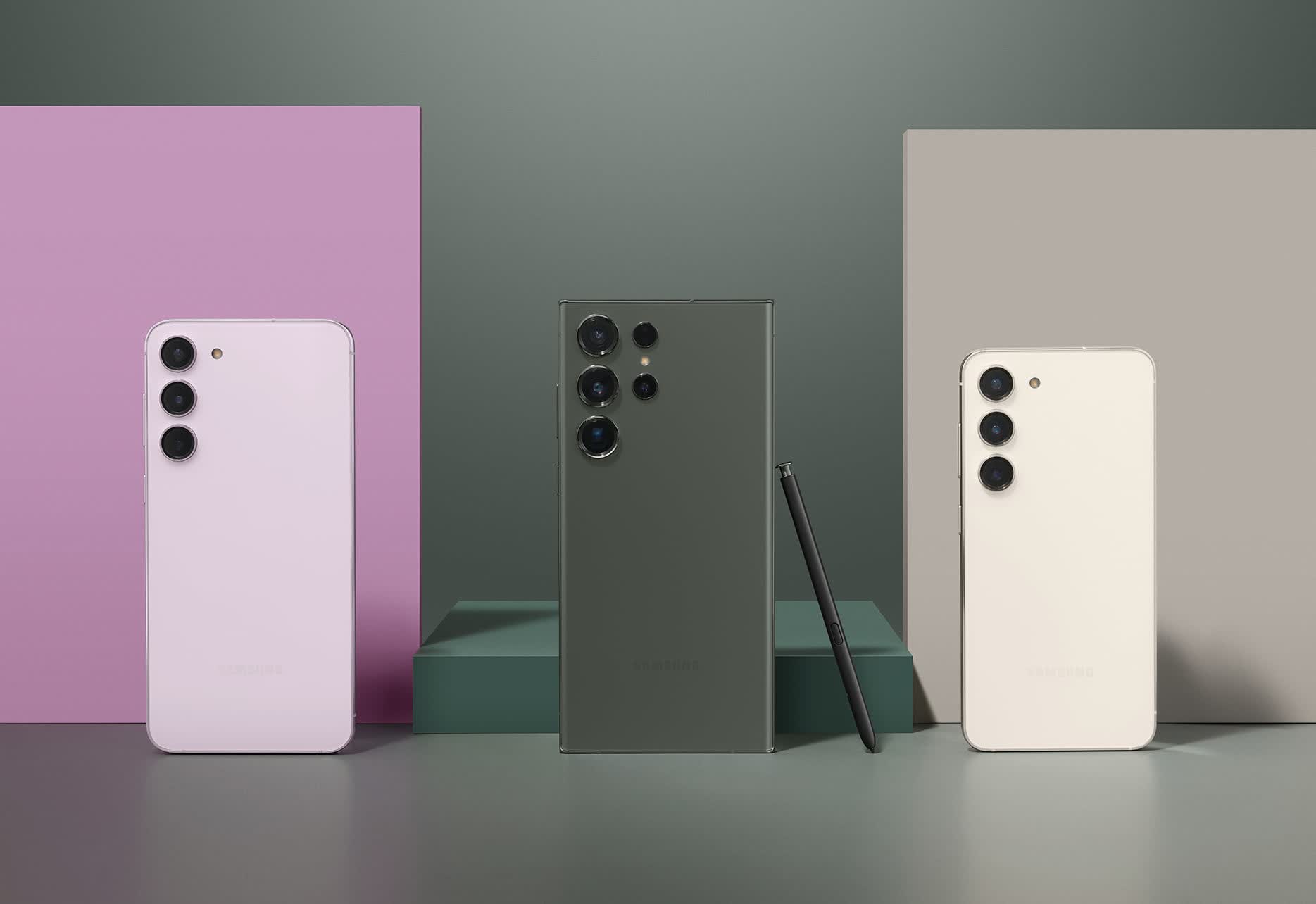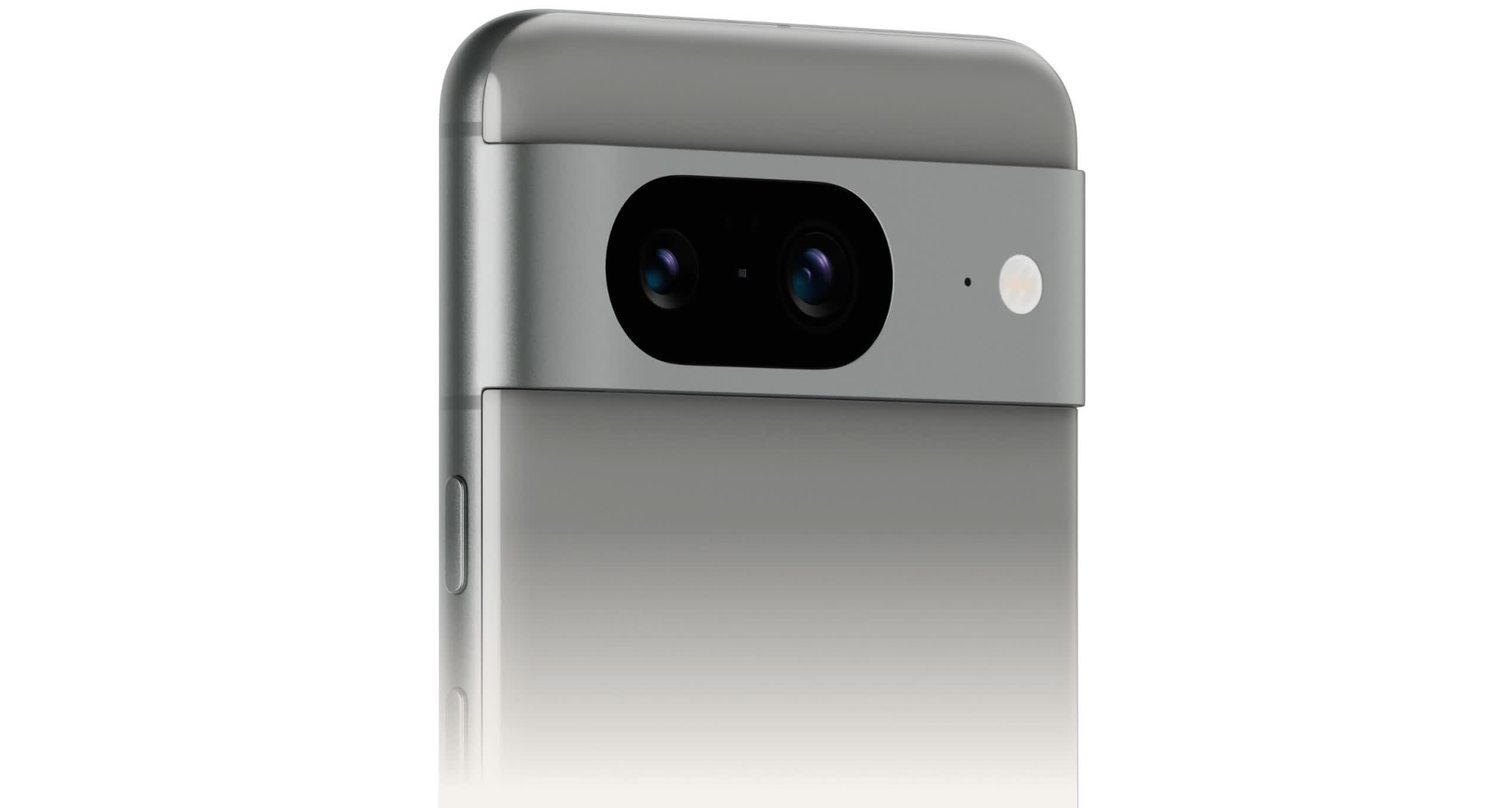The iPhone 15 looks like a combination of last year’s iPhone 14 and 14 Pro: the notch has been reduced in size and is now concealed within the “dynamic island,” which is useful to display key information from an app that is running in the background.
The main camera can take 48MP photos, but shoots at 24MP by default in favor of higher dynamic range and shutter speed. Under the hood is the same A16 chip as in the iPhone 14 Pro. One advantage the iPhone 15 has over the 14 Pro is the USB-C connector, although it still only supports USB 2.0 speeds. If you prefer a larger screen and battery over those features we just mentioned, you can get the 6.7″ iPhone 14 Plus for the same price.
Samsung Galaxy S23
The Samsung Galaxy S23 bears a striking resemblance to its predecessor. However, with a newer SoC and an additional year of guaranteed software support, the $700 price tag is justified. The S22 is available for a tad less, but that mostly makes it look better than the $600 S23 FE, which uses the same internals and cheaper materials.
Powered by the Snapdragon 8 Gen 2 SoC – currently the pinnacle in the Android sphere – the S23 has upgraded its front camera to 12MP from the S22’s 10MP. The promise of 4 years of OS updates and 5 years of security patches addresses the long-standing gripe many Android users have about being excluded from the latest features.
With 8GB of RAM and a 120Hz refresh rate, Samsung’s One UI Android interface glides effortlessly on the 6.1″ AMOLED display. For those who favor larger screens, the Galaxy S23+ offers a 6.6″ display (with the same 1080p resolution), a bigger battery to compensate, and 45W wired charging compared to the base model’s 25W.

The Galaxy S23+ starts at $1,000 but as of writing it’s been cut down to a more attractive $799, providing 256GB of base storage, so if you were planning to get that amount anyway, it’s currently matching the S23’s price.
All 256GB Samsung models utilize the swifter UFS 4.0 standard over 3.1, theoretically doubling the speed for file operations. Additionally, they introduce ultra-wide band (UWB) support, ideal for pinpointing Bluetooth-linked items such as Galaxy SmartTags.
In terms of camera specifications, both the S23 and S23+ closely resemble the S22. The 50MP primary camera can showcase its prowess when you zoom into minute details, but by default saves 12MP photos. This primary lens collaborates with a 12MP ultrawide and a 10MP telephoto sensor boasting a 3x optical zoom.
Built on Android 13, One UI 5.1 introduces features like convenient widget stacking, image text recognition, and enhanced cohesion with Google’s Material You design. With Samsung Dex support, users can transition to a desktop environment. Coupled with its software support, the Galaxy S23 emerges as an attractive proposition for most Android aficionados.
Google Pixel 8

Officially discounted to $699, the Pixel 8 becomes Google’s best offering for most, especially now that the Pixel 7 Pro is back to $900. With the new generation, Google guarantees 7 years of OS upgrades and security patches. As the brain behind Android, Google’s updates are as prompt as Apple’s iOS patches.
The 6.2″ display has the same 1080p resolution as the Pixel 7, but the same 120Hz refresh rate of the $1,000 Pixel 8 Pro. Camera-wise, the phone features a 50MP main lens, and a 12MP ultrawide sensor. Unlike the Pixel 8 Pro, the Pixel 8 only has the option to save photos at 12MP. The front hosts a 10.5MP camera – ample for most needs, but its fixed focus makes the Pixel less optimal for selfie stick usage.
What makes the Pixel 8 line stand out is the AI tools offered by the Tensor G3 SoC, regardless of how ethical they are. Audio Magic Eraser is useful for removing background noise from videos. Magic Editor allows to move, resize and remove people and objects in photos. Best Take shoots a burst of photos, allowing you to combine faces from different times into the same photo – a feature that was actually introduced by BlackBerry a decade ago. The era of photos being more reliable than drawings is seemingly over.
More Alternatives
On paper, the OnePlus 11 combines the best of all worlds with a 6.7″, 1440p display, a telephoto lens (albeit with a 2x optical zoom), the Snapdragon 8 Gen 2, and exceptional 100W wired charging (80W in the U.S.) that makes up for the lack of a wireless option. However, the software holds the cameras back, and at $700 it’s still too expensive for a device that may not survive a drop into water, so you should only consider it at a significant discount.
Foldable phones, like the new Samsung Galaxy Z Flip 5, might seem tempting. However, their design restricts battery and camera configurations. With a noticeable crease when unfolded, the Flip 5’s $1,000 price point is the same as the Galaxy S23+’s, and it’s more scratch-prone and lacks dust resistance.
The Motorola Razr+ (a.k.a. 40 Ultra) offers a higher-quality external display that can fully replace the main one more often, a more subtle crease, and much better dust resistance but much worse water resistance. It costs the same at $1,000, but comes with a last-gen SoC. Unless you really need the unique form factor, you should probably look elsewhere.

